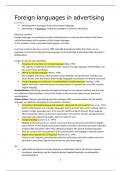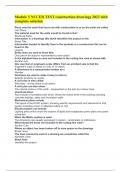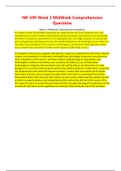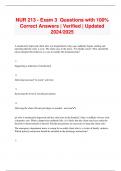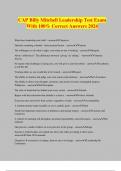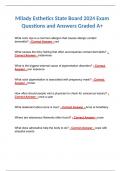Samenvatting
Summary of Foreign languages in Advertising, IBC, Radboud University, period 2
- Vak
- Instelling
- Boek
This is a summary of the second year course 'foreign languages in advertising'. The summary contains lecture notes, notes from the powerpoints and the book chapters. In addition, I obtained a 9.0/10.0 on the final exam by learning this summary.
[Meer zien]
